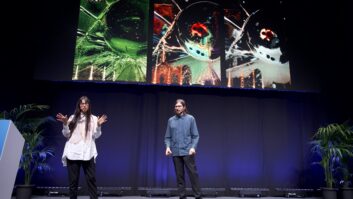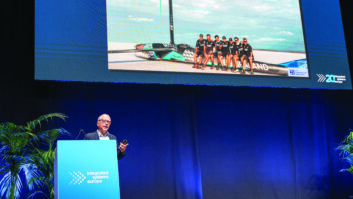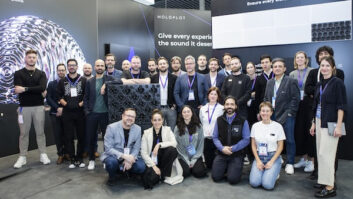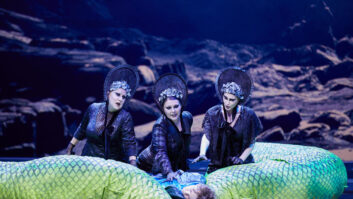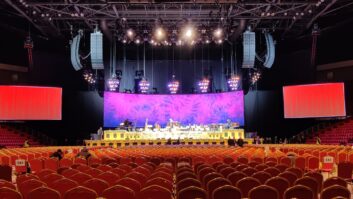ETC helps light up 1,000-year-old Viking warship in the National Museum of Denmark’s exhibition Viking. TFA looks at the design considerations. Around 1025 AD, a 37 m Viking warship of the Danish fleet rode the northern waves. Excavated in 1997 from a Roskilde fjord bed, the ship has now been partly restored. A massive steel skeleton has been built around its wooden remains. Roskilde 6 makes a new ‘voyage’, in the National Museum of Denmark’s exhibition Viking, until the end of November. ETC’s Source Four LED fixtures, controlled by an ETC Ion console and Unison Paradigm system, bring the vessel to life.
“This is the first such use of LED lighting in a museum in Denmark,” says lighting designer Hans Henrik Schmidt, “and exhibition reviews that we’ve seen which mention the lighting have been overwhelmingly positive.” Schmidt worked with ETC dealer Bico Professionel and the museum’s head of AV, Michael Bjørn, to come up with the exciting lighting scheme that would highlight the ship and surrounding exhibits. “The managers were keen to use ETC’s energy-efficient LED technology because of the quality of light and appropriate colour-rendering index values,” explains Schmidt. But the most important aspect of the lighting from the museum’s point of view was that the light output should not damage the exhibits, which included the ship and artefacts. “We recommended ETC Source Four LED Lustr+ for their low heat and minimal UV output. Even though they have indigo LED emitters, which would highlight whites just like a blacklight, there is virtually no UV, which could damage the 1000-year-old ship.”@page_break@The Lustr+ fixtures are also used to enhance the backdrop of video projections of animated Viking invasions. “I analysed the colours in the movie,” explains Schmidt, “and reflected them not only in the walls surrounding the screen but also the lighting on the ship itself. For example, when a city burns, or a ray of sunshine is seen in the film, the Lustr+ can produce warm yellows, reds and oranges in the reflections. And when there is a flash of lighting, we see a strobe effect.” All the lighting was programmed by freelance operator Jan Michael Jensen using an ETC Ion control desk bought by the museum. “Because no one was allowed near the exhibit in case of harming it, the fixtures all needed to be addressed remotely once they were in situ.” The show was then transferred to a Unison Paradigm system using the snapshot function. “That way, the day to day lighting can be operated by minimally trained staff, such as gallery attendants, cleaners and security,” says Schmidt. “Normally, the system can be started at the beginning of the day using a key operated switch, and it runs a timed program that contains all cues and triggers for the video performance.”
Staff can use the panel to turn the system on or off, but other lighting adjustments can be carried out by authorized personnel via the Ion desk. The system is also designed to work with the existing halogen house lights as required. The exhibition moves to London at the end of the year, followed by Berlin in 2014 – but the museum will keep the lighting equipment for future use. www.etcconnect.com
ETC Source Four LEDs light world’s longest Viking ship
ETC helps light up 1,000-year-old Viking warship in the National Museum of Denmark’s exhibition Viking. TFA looks at the design considerations.
